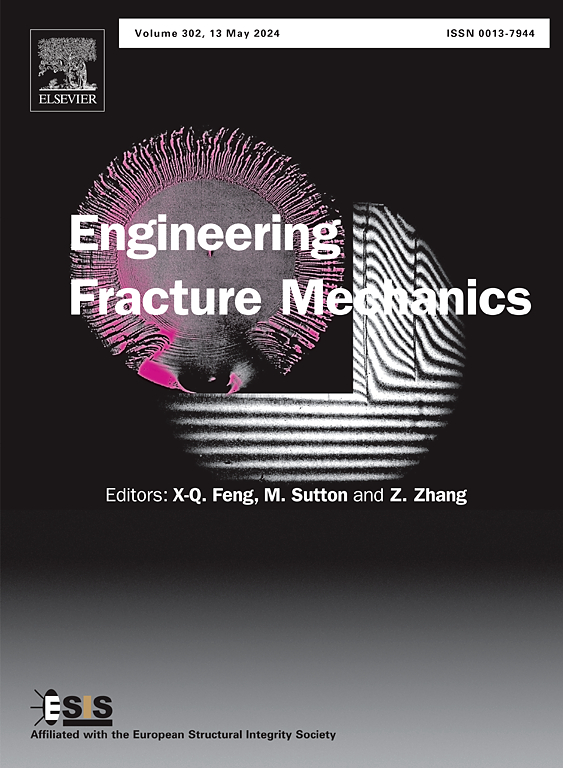镍基单晶高温合金蠕变失效机理分析及断裂寿命预测的晶体粘塑性模型
IF 5.3
2区 工程技术
Q1 MECHANICS
引用次数: 0
摘要
单晶(SX)涡轮叶片在使用过程中的性能受到漂流的影响很大,漂流增加了位错的平均自由程,从而加速了蠕变速率。采用扫描电镜(SEM)、透射电镜(TEM)和图像处理软件分析了第二代镍基SX高温合金在980℃和不同载荷下的蠕变响应。显微组织演化参数通过量化蠕变过程中基体相的宽度来定量确定流变条件,并将其纳入本构模型。基于晶体粘塑性理论推导出的Norton方程,建立了表征各向异性的蠕变断裂寿命预测模型,并引入了等效损伤的定义来反映微观组织的演变。该模型通过量化微观组织演变,提供了使用条件下蠕变断裂的定量分析。本文章由计算机程序翻译,如有差异,请以英文原文为准。
Crystal viscoplasticity model for creep failure mechanism analysis and fracture life prediction in Ni-based single crystal superalloy
The performance of single crystal (SX) turbine blades during service is greatly affected by rafting, which increases the mean free path of dislocations, hence accelerating the rate of creep. The creep responses of the second-generation nickel-based SX superalloy were analyzed at a temperature of 980 ℃ and under various loads using Scanning Electron Microscopy (SEM), transmission electron microscope (TEM) and image processing software. The microstructure evolution parameter was utilized to quantitatively determine the rafting condition by quantifying the width of the matrix phase during creep, and subsequently incorporated into the constitutive model. The creep fracture life prediction model is established based on the Norton equation derived from crystal viscoplasticity theory, which characterizes anisotropy and incorporates the definition of equivalent damage to reflect the evolution of microstructure. The model provides a quantitative creep fracture analysis of service conditions by quantifying the microstructure evolution.
求助全文
通过发布文献求助,成功后即可免费获取论文全文。
去求助
来源期刊
CiteScore
8.70
自引率
13.00%
发文量
606
审稿时长
74 days
期刊介绍:
EFM covers a broad range of topics in fracture mechanics to be of interest and use to both researchers and practitioners. Contributions are welcome which address the fracture behavior of conventional engineering material systems as well as newly emerging material systems. Contributions on developments in the areas of mechanics and materials science strongly related to fracture mechanics are also welcome. Papers on fatigue are welcome if they treat the fatigue process using the methods of fracture mechanics.

 求助内容:
求助内容: 应助结果提醒方式:
应助结果提醒方式:


